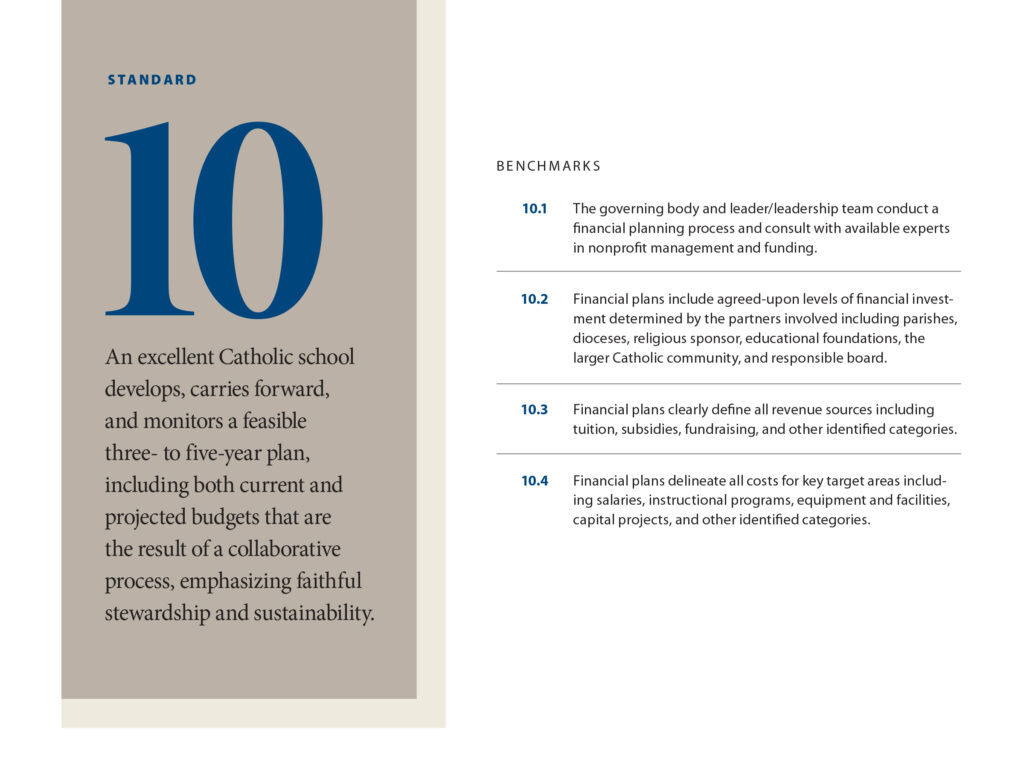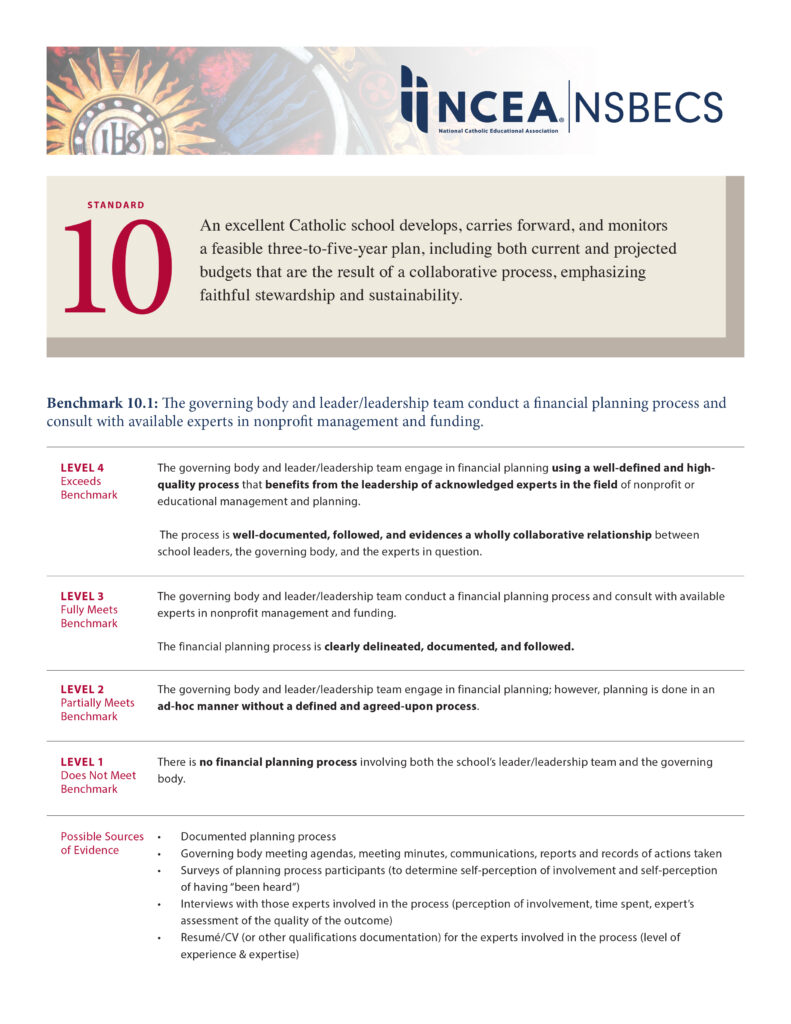Written by Kaitlin Reichart, Ed.D., Greeley Endowed Chair, Andrew M. Greeley Center for Catholic Education, clinical assistant professor, School of Education, Loyola University Chicago, kreichart@luc.edu
Consider the following scenarios:
- You are a new principal starting at a Catholic school. Teachers and parents have shared many concerns about academic programming and the academic progress of students.
- You work at the diocesan level, and survey results indicate a decrease in faith formation within the local Catholic schools.
- You are a new board member at a Catholic school. In your first meeting, it was shared that the school’s operations are causing a significant financial deficit.
Where do you start in the improvement process? What should be expected? How will you measure success? The National Standards and Benchmark for Effective Catholic Elementary and Secondary Schools (NSBECS) offers excellent guidance, tools and resources for the school improvement process.
The Standards and Benchmarks
The NSBECS are broken into four domains: Mission and Catholic Identity, Governance and Leadership, Academic Excellence and Operational Vitality. Each domain has a lead standard and benchmarks to provide more specific, measurable descriptors for each standard.
Below is a sample from Standard 10, which focuses on long-term financial planning. The standard provides structures and processes, and the benchmarks provide descriptions of how to meet the standard.

The Rubrics
Benchmark rubrics are available to evaluate success within each benchmark. The rubrics provide concrete descriptors of policies, programs and procedures, along with examples of evidence to support rubric ratings. It allows for an in-depth internal evaluation of operations and programs to support the school improvement process.
Below is an example of the rubric for Benchmark 10.1. Each benchmark can be scored from 1-4, and there is a detailed description to assist in choosing a score.

Scoring Template
The scoring templates can be used as a collaboration tool for school community members. Teams can use the template to share scores, analyze data and evidence, and make recommendations for school improvement.
Step 1: Complete the benchmark scoring template.
Below is an example of the scoring template for Benchmark 10.1. Use the template to identify and describe pieces of evidence that correlate with the benchmark. After evidence has been identified, described and scored, work as a team to choose a summative score for this benchmark.

Step 2: Complete Standard Summative Scoring Template
Below is an example of the scoring template for Standard 10. Use the template to gather benchmark scores and choose a summative score for the standard. Work as a team to identify next steps for school improvement related to the standard.

The NSBECS offer a strong framework along with tools and resources for Catholic school leaders to improve their school. Administrators, board members, diocesan leaders and teacher-leaders would benefit from the NSBECS for self-evaluation, continuous improvement and the accreditation process.
Be sure to join us for two upcoming webinars in the NCEA NSBECS Series, which build on the insights shared in this blog.
- Tools for Excellence: Using the NSBECS and its Resources for Sustainable School Improvement — Tuesday, May 13, 2025, 12 PM ET
- Using the Rubrics and Scoring Templates — Thursday, June 5, 2025, 12 PM ET
